Pandit Shiv Dayal Batish
Raga Manavati
Ashwin Batish and family Live
The UC Theater, Berkeley, California.
Meena Batish
Words by Ghalib
Music by S.D. Batish
Phone: (831) 423-1699

Tabla Lesson 3 - Tabla Accessories and Care
by Ashwin Batish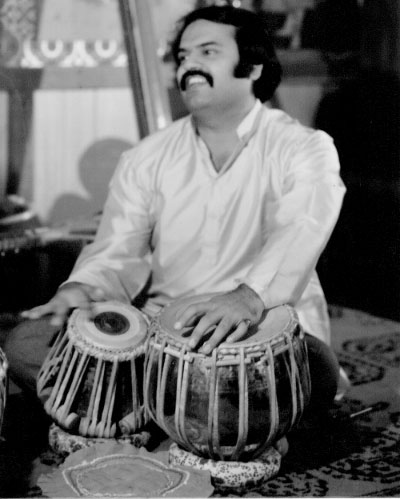 In the last lesson, I left off on the issue of Tabla Paraphenelia. To continue.... If you didn't already get the following goodies with your tabla set, you need to go out and acquire them or make them yourself.
In the last lesson, I left off on the issue of Tabla Paraphenelia. To continue.... If you didn't already get the following goodies with your tabla set, you need to go out and acquire them or make them yourself.
Here's that list again
- Tabla Hammer
- Talcum Powder
- Covers for the Tabla/Dagga heads
- Rings to rest the drums on
- Carrying bag or Case for your set
- Credit card or similar rectangular plastic piece
Tabla Hammer
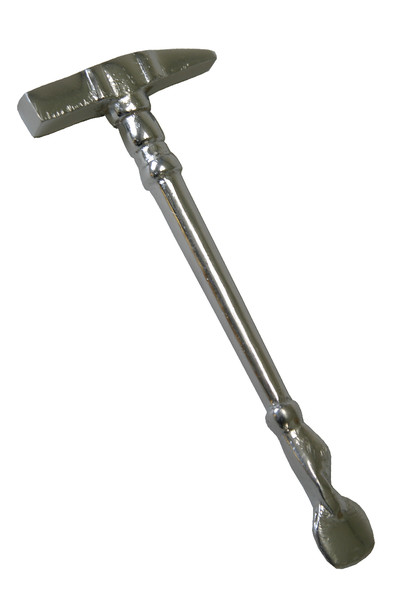 A good quality hammer is a must. The type of metal used is very important. Stay away from steel hammers. They are hard on the skins. You need a brass or copper hammer. They have better weight distribution and are easy to file into shape (if for some reason they are not shapped properly when you bought them).
A good quality hammer is a must. The type of metal used is very important. Stay away from steel hammers. They are hard on the skins. You need a brass or copper hammer. They have better weight distribution and are easy to file into shape (if for some reason they are not shapped properly when you bought them).
A good hammer will balance well in your hand. Some hammers, especially the newer designs I've seen coming out of India, have a much shorter stem. Perhaps they are trying to save on the metal or whatever. Make sure your hammer is atleast 8-9 inches long. The flat side should have a slight curvature.
The other side of the hammer should be shapped like a blunt flat chissel. The blunt edge is atleast 1/8th of an inch thick and about 1/2 inch wide. This end has special use.
The Flat edge: Check to make sure if the head of your hammer has a curvature. If not, you might want to file it.
This curvature is usuallly found in a well designed hammer, although a good tabla player will be able to use any hammer to get results. But I want to tell you the logic behind this. A beginner to tuning will appreciate this.
In many instances, when the tuning of the tabla requires you to hit the edge of the rim (gajara) to tune the head to a higher pitch, a shaky hand can slip and hit very close to the head. If the hammer is curved, chances are you wont hit the head accidently. I have seen many heads get chewed up and eventually split as the head sustains more and more of these hits. On a side issue, try to tune your tablas in good lighting. You might like to turn the lights down and practice your tabla by candle light. I would. But Some of my students have tried to tune their drums in this light only to discover next morning the hits taken by the drum heads. It was a war zone last night. So if you have to tune, be alert and have the lights on.
The other end of the hammer should also taper to a flat chisel type of finish. This end is used for lifting the leather straps over the dowels as the straps get loose through constant use. By putting it under the strap you need to raise, gently lift the strap, leveraging over the other straps or the wooden dowel. This beats having to lift each strap manually.
Talcum Powder or Corn Starch
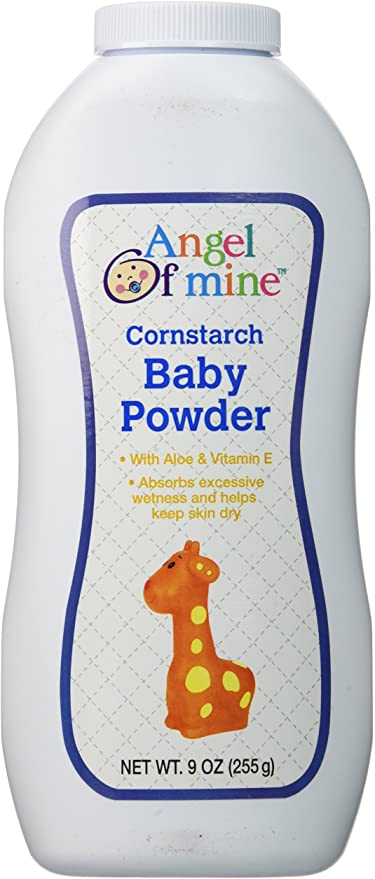 Everyone has their preference for what type of powder to use. I like Johnson's baby powder. It has a nice slip to it. Don't over do its application on your hands. I've often seen students drenching themselves with this stuff as a cloud covers them where they sit :-) It's really funny to see.
Everyone has their preference for what type of powder to use. I like Johnson's baby powder. It has a nice slip to it. Don't over do its application on your hands. I've often seen students drenching themselves with this stuff as a cloud covers them where they sit :-) It's really funny to see.
A while back, there was a report that talcum powder might be cancerous, so I looked for an alternative and what I found was that Corn Starch at Dollar Tree works really well!
In either case, what I like to do is pour a little puff of this powder on my Tabla cover. Then I touch the powder with the ring finger of my right hand. Then just touch the heel of your left hand with the ring finger. That's it! This can be done even while you are performing the Tabla. Just don't loose the tempo. The problem with using too much powder is that as your hand sweats, it will start to cake over the Tabla heads. This will happen no matter what. The idea is to prolong the inevitable head cleaning task. That's where you need your credit card!
Tabla Covers
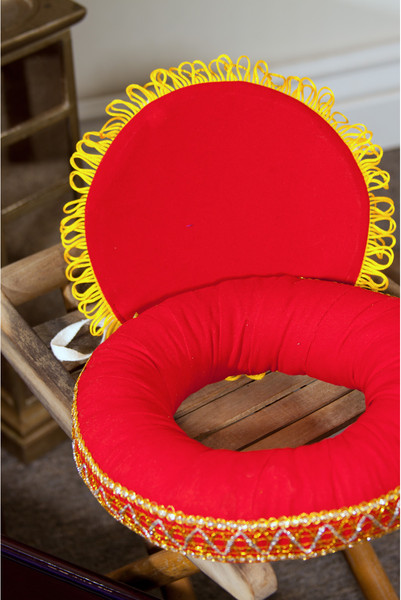 The covers perform a vital function. They not only protect the heads from dust, but they can help negate the harmful effects of atmospheric moisture and temprature variations. Besides this, a well designed cover can protect the heads from some major accidents. The cloth covers are very easy to make. But the really good ones take time. They need to be made out of a good quality quilted cloth and should be covered with plywood for added protection. If you didn't get covers with your set, make them as soon as possible. Till you have them, cover your drums with some warm cloth wrap. Whatever you do, don't keep the drums in direct sunlight or where there is excessive moisture, like near a shower. The Syahi (black spots) of the Tabla is made out of water soluble glue. It will disolve if it comes into contact with water. If by chance you spill any liquid on it.... say good bye to the head.
The covers perform a vital function. They not only protect the heads from dust, but they can help negate the harmful effects of atmospheric moisture and temprature variations. Besides this, a well designed cover can protect the heads from some major accidents. The cloth covers are very easy to make. But the really good ones take time. They need to be made out of a good quality quilted cloth and should be covered with plywood for added protection. If you didn't get covers with your set, make them as soon as possible. Till you have them, cover your drums with some warm cloth wrap. Whatever you do, don't keep the drums in direct sunlight or where there is excessive moisture, like near a shower. The Syahi (black spots) of the Tabla is made out of water soluble glue. It will disolve if it comes into contact with water. If by chance you spill any liquid on it.... say good bye to the head.
Our institute can custom design these covers for your drum set. Please call 1-800-RAG-MALA for more information.
Tabla Rings
 These are what the drums rest on. They are large donut shaped pair of rings. Different size drums take different diameter rings. The acid test is that when the drums rest on these rings the lower area of the drum should not touch the floor or it will kill the resonance epecially in the Dagga, the bass drum. In a pinch you can make these yourselves. Just take a bunch of rope and twist it around in a circle. Make sure that there is a hole large enough to rest your tabla on. After you've rolled enough rope that is seems about 2 inches thick, simple wrap some duct tape around this rolled up rope. There's your perfect tabla ring! Don't forget to make 2!
These are what the drums rest on. They are large donut shaped pair of rings. Different size drums take different diameter rings. The acid test is that when the drums rest on these rings the lower area of the drum should not touch the floor or it will kill the resonance epecially in the Dagga, the bass drum. In a pinch you can make these yourselves. Just take a bunch of rope and twist it around in a circle. Make sure that there is a hole large enough to rest your tabla on. After you've rolled enough rope that is seems about 2 inches thick, simple wrap some duct tape around this rolled up rope. There's your perfect tabla ring! Don't forget to make 2!
Carrying bag or Case for your set
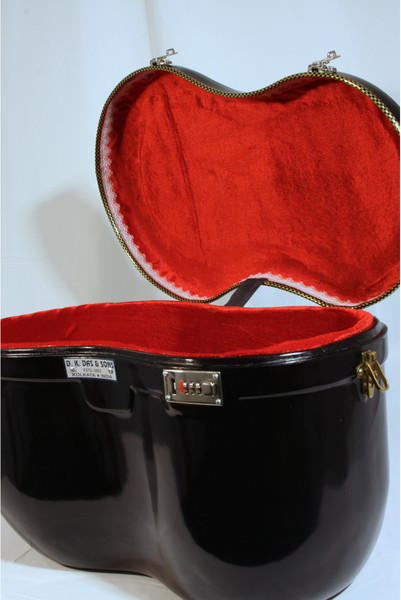 A good carrying bag can usually be found in sports departments. Duffle bags work well. I use a soft airline bag to carry my Tablas in. If I'm travelling to concerts, I've converted a sea chest to hold the drums. Bascily anything will work. Get whatever option suits your personal situation.
A good carrying bag can usually be found in sports departments. Duffle bags work well. I use a soft airline bag to carry my Tablas in. If I'm travelling to concerts, I've converted a sea chest to hold the drums. Bascily anything will work. Get whatever option suits your personal situation.
I actually found my ideal tabla box at Goodwill. They were selling some old computer cases that I picked up for about $25 and it has been one of my most sturdy tabla cases and it has travelled all over the world with no damage.
Credit Card
 Cleaning dirt and accumulated talcum powder from your tabla heads is a constant affair. You will notice a dullness in the sound. But there will be a visual sign. The caked powder will be visible. This is the time to get your credit card out of your wallet.
Cleaning dirt and accumulated talcum powder from your tabla heads is a constant affair. You will notice a dullness in the sound. But there will be a visual sign. The caked powder will be visible. This is the time to get your credit card out of your wallet.
Actually anything flat, rigid and thin will work. Just make sure there aren't any sharp edges. We don't want a scratch or a hole in the head. A plastic credit card works the best for me. Just put one of the edges on the head and scrape away.
Well, Your drum is now in great shape. Now you have to make sure it is tuned right. In the next lesson I'll discuss the various head sizes and their tuning ranges. And if there's space and time, I'll give you some hints on how to tune your tabla.
Issues:
1 • 2 • 3 • 4 • 5 • 6 • 7 • 8 • 9

|
|
|
email: info [at] batish.com
copyright ©1995 - Present Time ---- Batish Institute. All rights reserved. Intended For Personal Use Only. No part of the information here may be reproduced or utilized in any form or by any means, electronic or mechanical, including photocopying and recording, or by any information and storage retrieval system, without specific written permission from the Batish family.